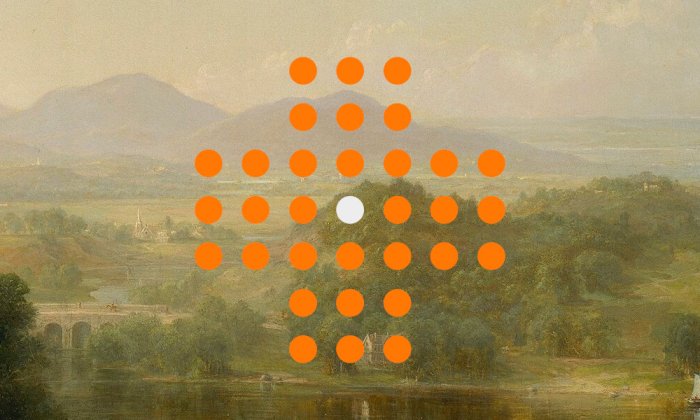The Truth in Games

The brilliant 20th-century physicist Richard Feynman once remarked on how, as a scientist, he appreciated the beauty of a flower:
I have a friend who’s an artist and has sometimes taken a view which I don’t agree with very well. He’ll hold up a flower and say, “look how beautiful it is,” and I’ll agree. Then he says, “I as an artist can see how beautiful this is but you as a scientist take this all apart and it becomes a dull thing,” and I think that he’s kind of nutty. First of all, the beauty that he sees is available to other people and to me too, I believe. Although I may not be quite as refined aesthetically as he is . . . I can appreciate the beauty of a flower. At the same time, I see much more about the flower than he sees. I could imagine the cells in there, the complicated actions inside, which also have a beauty. I mean it’s not just beauty at this dimension, at one centimeter; there’s also beauty at smaller dimensions, the inner structure, also the processes. The fact that the colors in the flower evolved in order to attract insects to pollinate it is interesting; it means that insects can see the color. It adds a question: does this aesthetic sense also exist in the lower forms? Why is it aesthetic? All kinds of interesting questions which the science knowledge only adds to the excitement, the mystery and the awe of a flower. It only adds. I don’t understand how it subtracts.
Over a century earlier, Walt Whitman’s poem “When I Heard the Learn’d Astronomer” articulated a feeling that perhaps captures something of the point of view of Feynman’s artist friend:
When I heard the learn’d astronomer,
When the proofs, the figures, were ranged in columns before me,
When I was shown the charts and diagrams, to add, divide, and measure them,
When I sitting heard the astronomer where he lectured with much applause in the lecture-room,
How soon unaccountable I became tired and sick,
Till rising and gliding out I wander’d off by myself,
In the mystical moist night-air, and from time to time,
Look’d up in perfect silence at the stars.
Whitman’s poem suggests that there is, in fact, a tension between these different ways of looking at the world. That the scientific perspective, with its quantified data and logical explanations, may give us new ways of understanding the world, but also may diminish our capacity to appreciate the world directly, understand it intuitively, and experience its beauty as pure sensation. The tension between these two ways of looking at the world — as a scientist and as a poet — is, I believe, an essential aspect of games as an aesthetic form and a key concept for understanding how games work as culture.

With apologies to Walt Whitman, imagine before you two columns containing some of the words we use to describe these two ways of looking at the world: On one side you have Thought, Intellect, and Rationality; on the other, Feeling, Emotion, and Intuition. On the left side, the realm of science and logic, on the right side, the realm of art and morality. One side is the domain of reducing, explaining, measuring, and objective truth. The other, the domain of the irreducible, the inexplicable, the immeasurable, and subjective truth.
One of the things that makes games a very different kind of aesthetic form is that they have objective truth in them. And because of this, they belong, in a sense, in the first category, along with science and logic and evidence and rationality.
What does it mean to say games have objective truth in them?
In “Ode on a Grecian Urn” the poet John Keats writes
“Beauty is truth, truth beauty,” — that is all Ye know on earth, and all ye need to know.
By itself this declaration of equivalence seems simple and definitive. But you only need to read the surrounding stanza to realize how subtle and complicated this statement is. Those quotation marks around the phrase? Those are in the poem, because, you see, this is the urn talking. Keats is imagining this beautiful object expressing its message about truth and beauty to someone in the future, after the poet himself is gone. Someone like you or me. And we can hear this message, can’t we? It may not be simple or definitive, but it isn’t nonsense, nor is it just a pretty but vacuous phrase. We understand what it means — that art has the power to capture and express sublime truths, even if, in doing so, the work of art is plucked out of the flow of life, suspended beyond the chain of events that is the source of ordinary meaning, and made strange.
For the influential film critic André Bazin, the power of truth to create beauty was expressed by photography’s relationship to the real. There was something universal, something sacred, about the physical reality of the little slice of world in front of the camera’s lens, the actual objects and people and the actual light that bounced off of them and was caught in the chemical structure of the film.
Generations of actors have sought out the power of truth at the heart of acting, the elusive thread of reality at the center of theater’s elaborate vortex of make-believe. Musicians seek it too, as reflected in the concept of the “false note.” And anyone involved in any creative or artistic process recognizes the desire to find that perfect moment of truth where a gesture, detail, image, or phrase feels indelibly, incontrovertibly right.
What is the truth that art seeks to express? Sometimes it is verisimilitude — the degree to which a representation accurately reflects some aspect of the world it seeks to mimic. But the relationship of truth to beauty goes deeper than accurate resemblance. It also includes the thrill of recognition that accompanies a moment of ecstatic emotion, the shudder of genuine joy that can’t be faked, the spark that tells us this works — whether we want it to or not, whether we think it should, whether it’s supposed to, whatever our books or formulas or techniques or theories tell us — this works.
In “The Critique of Judgment,” which is, arguably, the foundation point of modern aesthetics, Immanuel Kant emphasizes the importance of this emotional response to beauty. For Kant, the truth in beauty is the recognition that the pleasure one feels in its presence is something that other humans would also feel. Even though this feeling is happening to us, a vivid slice of our internal experience, it isn’t private; it is a moment of shared humanity. Aesthetic experience is precisely this spark of connection between our innermost, most subjective responses and the external, objective fact that we are human and our responses have some inevitable overlap with other people’s. Beauty, for Kant, is this recognition that we are not alone.
For Kant, the truth in beauty is the recognition that the pleasure one feels in its presence is something that other humans would also feel.
Physicist David Deutsch, in an echo of Feynman, extends this spark of connection beyond the realm of the human when he considers the question — why do we find flowers beautiful? After all, we are not bees. Flowers did not evolve to be attractive to us, and we did not evolve to be attracted to them, so why are we? Deutsch’s explanation is that, in the process of solving the problem of how to forge an efficient channel of communication between different species, flowers and bees tapped into something objective and universal about certain formal patterns. According to Deutsch’s explanation, we recognize the beauty of flowers because it is an objective fact.
By virtue of being an aesthetic experience, games inherit all of these complex connections between truth and beauty. But, by being an aesthetic experience that incorporates instrumental reason, games bring these subtle and complex connections into close contact with a simpler, more direct expression of the concept of truth: simple, first-order facts about material reality — solutions that fit into problems like a key into a lock.
When you look at a position in Go, some moves are winning moves and some moves are losing moves, and this is simply an objective truth about the position. Moreover, the principal beauty of Go consists in searching for and discovering and arguing about these truths. When we play QWOP, there are certain combinations of button presses that move us forward and we are trying to discover them. This search for truth exists in some form across all games — we can feel its presence whenever we find ourselves asking questions like “what happens when you do this instead of this? Is this possible? Does this work?”
Games are conversations between players, designers, and the world — the empirical world, the old-fashioned, naturalistic, material world with its direct, stubborn, objective truth. The world on which we bang our heads and stub our toes. That world is a participant in these conversations.
But that doesn’t mean that this conversation is the same one that takes place in science. We cannot reduce games to science or math. Games always remain aesthetic experiences. The conversation we have with them and through them is a conversation about beauty and meaning, pleasure and disgust, direct experience leading to shared values. The words of this conversation might include “explanation,” “evidence,” “logic,” and “proof.” But the conversation itself is irreducible, inexplicable, ambiguous. I can specify a sequence of actions which, if followed, is guaranteed to fell all the giants in Shadow of the Colossus, about that there is no doubt. But there is endless doubt about what that experience means, how we feel about it, and why.
The conversation we have with and through games is a conversation about beauty and meaning, pleasure and disgust, direct experience leading to shared values.
Or take for example the game of Chess — each individual game of Chess, each position, can be broken down and analyzed with logic. But the act of playing Chess, devoting your life to this absurd activity, developing the self-control needed to master this demanding discipline, waking up early every day to study this arcane skill, going to tournaments, participating in elaborate rituals where you test yourself against other people . . . that isn’t logic, it’s art.
Finally, consider the performance of American athlete Jesse Owens at the 1936 Olympics. That Owens crossed the finish line first, again and again and again, is a simple matter of fact. It is precisely this kind of fact that track and field events are designed to produce. And, sitting in the stands, Adolf Hitler was forced to watch in silence as this plain fact made a mockery of his delusional fantasies regarding the innate superiority of Aryan athletes.
There are objective truths in games, but the truths that emerge from games, their ultimate meaning, is the other kind of truth. The one Walt Whitman is looking for outside the lecture hall, in the night, under the stars.
Frank Lantz has taught game design for over 20 years at New York University, where he helped create the NYU Game Center and served as the founding Chair of the Game Design department from its inception until 2021. Lantz, who has designed over 50 games, is also the author of “The Beauty of Games,” from which this article is adapted.



